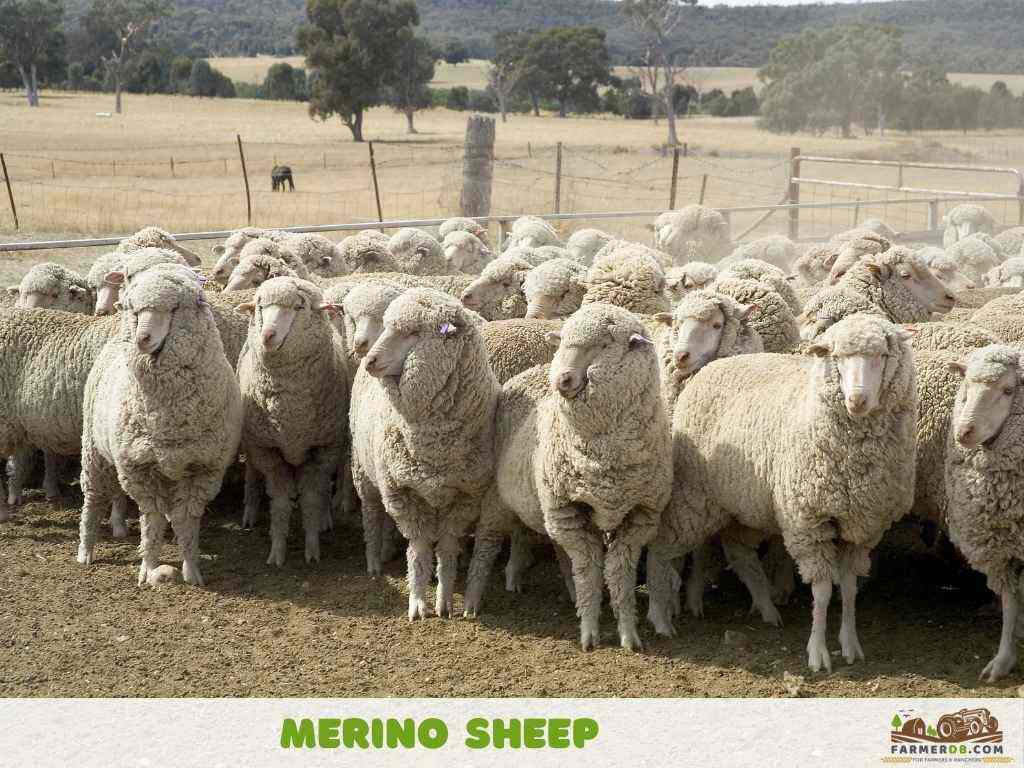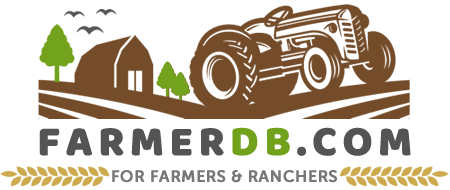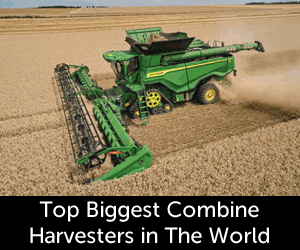The Merino is a distinct breed of sheep, and at the same time, it is also recognized as a group that includes a variety of related sheep breeds.
This became possible through its export from Spain, its place of origin, to several European countries, as well as Australia and South Africa.
Through selective breeding, different Merino-derived breeds and strains were developed, each adapted for specific wool quality, climate, or meat production.

Today, Merino sheep are raised worldwide and remain one of the most important sheep breeds for wool production.
Contents
History and Origins
The history of this sheep is long, as it is believed to have emerged around the 15th century.
How exactly it originated and reached its final form remains unknown, despite multiple theories about its origins. Some theories even suggest that it may have developed as early as the 12th or 13th century.
One of the most widely supported theories is that this breed resulted from the crossbreeding of native Churro sheep with various imported fine-wool rams in the 15th century. Genetic studies support this idea, showing that Merino sheep evolved over centuries through selective breeding, incorporating Italian, North African, and later English influences.
These sheep gained significant recognition for their wool in 15th-century Spain, where Merino wool was regarded as superior to some English wools and was part of a monopoly controlled by Spain.
By the late 15th century, Merino wool had become a significant source of income for Castile. Until the 18th century, exporting these sheep outside of Spain was strictly forbidden, and violators could face the death penalty.
It wasn’t until the 1700s that Merinos began to be exported to other parts of Europe, including France, Hungary, and Prussia, and later to Australia, South Africa, and the United States, where they played a major role in the global wool industry.
Merino Sheep Breeds and Strains
The list below includes major Merino breeds and strains, showing the diversity within the Merino group.
- Spanish Merino (Original Merino)
- Australian Merino, which is divided into several strains:
- Peppin Merino
- Saxon Merino
- South Australian Merino
- Poll Merino (hornless variety)
- Booroola Merino (high fertility strain)
- Delaine Merino Sheep (U.S. strain)
- Rambouillet Sheep (French Merino)
- South African Merino
- South African Mutton Merino
- Fonthill Merino Sheep (New Zealand/Australian strain)
- German Mutton Merino Sheep (Merinofleischschaf)
- Merinolandschaf Sheep (German dual-purpose breed)
- Medium-Wool Merino Sheep
Sheep Classification: Type A, B, and C
Over time, a classification system has been developed for these sheep based on their wool quality, body structure, and adaptation to different environments. The traditional classification includes Type A, Type B, and Type C Merinos.
- Type A Merino (American Merino): This type is characterized by very fine, high-quality wool with heavy skin folds. This wool is also dense and has a high grease content.
- Type B Merino (Intermediate Merino): It produces fine, high-quality wool, but with slightly less grease compared to Type A.
- Type C Merino (Delaine Merino): It makes fine and uniform wool, though slightly coarser than Type A.
Major Merino-Producing Countries
In the ranking of countries with the highest Merino sheep and Merino wool production, Australia holds the top position as the world’s largest producer of Merino wool, with 65% of the country’s sheep being Merino.
New Zealand comes in second, where Merino wool is primarily used for outdoor wear and luxury clothing. South Africa ranks third, followed by Argentina and then the United States.
Main Uses of the Breed
The majority of Merino breeds and strains, such as Saxon Merino, Peppin Merino, and Delaine Merino, are raised for their wool, which is among the softest and finest in the world.
But not all are used for the same purpose.
Some strains have also been bred for meat production.
Breeds like Rambouillet, South African Mutton Merino, and German Mutton Merino are larger and more muscular, making them suitable for both wool and meat. These sheep provide high-quality lamb and mutton, while still producing wool, though it is usually coarser than that of fine-wool Merinos.
In some regions, they are also used for crossbreeding with other breeds to improve wool fineness and meat quality.
How to Raise It
Feeding
A large part of a sheep’s diet should consist of forage, meaning fresh pasture grasses during the warmer seasons and high-quality hay in colder seasons.
Forage provides most of the nutrients, vitamins, and proteins they need to stay healthy.
To make sure the pasture is in good condition, you can practice rotational grazing or test the soil to see if it needs extra nutrients to maintain healthy forage.
When pastures dry out in late spring and summer, you need to introduce supplementary feeding with grains like lupins, corn, oats, barley, or wheat. Silage can also be used as a supplemental feed.
If the sheep are pregnant or lactating, they need grains throughout this period since they use more energy.
Another important thing to consider is providing them with the vitamins and minerals they need, such as vitamins A, D, E, and K, along with minerals like magnesium, iron, zinc, phosphorus, calcium, selenium, manganese, and sodium.
Fresh water must always be available.
Weaner Nutrition for Better Growth and Survival
Nutrition and timing play a crucial role in the survival rate and growth potential of weaners. When preparing their feeding plan, you should think about the seasons, how much pasture is available, and that they need more energy and protein than adult sheep.
Weaners also rely on pastures as their primary food source. However, when pastures dry out, they no longer provide enough nutrients for proper growth and development. In such cases, supplementary feeding with grains, silage, and stubbles becomes necessary.
You must ensure that lambs reach at least 45% of their mature weight at weaning before pasture quality declines.
Once pastures have already deteriorated and grain feeding becomes necessary, a good practice is to separate heavier weaners from lighter ones. This allows for better post-weaning nutrition, ensuring that each group receives the appropriate feed based on their specific needs.
Grains offer an important energy and protein boost, helping weaners maintain steady growth. Recommended grains include lupins, oats, barley, wheat, and corn.
Grain supplements should be introduced gradually over 2-3 weeks to prevent digestive issues like grain poisoning (rumen acidosis).
Shearing
Merino sheep need to be shorn at least once a year, but biannual shearing every six months is possible, although it is rarely practiced with this breed.
One important thing to consider when shearing these sheep is the climate they live in. You need to choose the right time for shearing to keep them healthy and comfortable.
The best time for shearing is spring or early summer, which means:
- Southern Hemisphere: Between September and December
- Northern Hemisphere: Between March and June
It is important that sheep do not have wool during the hottest months to prevent heat stress. At the same time, they need enough wool regrowth before winter to stay warm in colder temperatures.
For pregnant ewes, you can shear them in the middle of pregnancy to help keep them comfortable and reduce stress.
Avoid shearing sheep when the weather is cold, wet, or very windy. A sudden drop in temperature after shearing can affect their health and cause stress. Keep in mind that as soon as their wool is removed, their body already goes through a significant temperature change, making them more sensitive to harsh weather conditions.
If you shear your sheep in bad weather, you should provide them with extra food and shelter for a few days until the conditions get better.
Once you have chosen the right timing, the next step is to prepare the sheep and ensure everything you need is within reach before starting.
- Limit food and water intake for a certain period before shearing. The fasting period should be adjusted based on the sheep’s condition (pregnant, non-pregnant, lactating, old, or young). Sheep with an empty stomach are more relaxed since they can be positioned more easily without discomfort. A full stomach, on the other hand, can put pressure on their lungs when they are turned on their back.
- Remove any excess vegetation, debris, or dirt from the fleece to make the shearing process easier.
- Prepare all tools in advance and keep them nearby to make the job easier. Ensure you have a skilled shearer who can cut cleanly and quickly.
- Have treatments ready in case of small shearing cuts, such as antiseptic spray or wound care solutions.
Crutching
Crutching is an important practice when raising these sheep.
It means shearing wool from certain areas of the body, like around the tail, udder, and belly. This helps keep the sheep clean, lowers the risk of flystrike, and makes lambing easier for ewes.
You can do it once or twice a year, but it’s best to crutch 4 to 6 weeks before full shearing to keep the fleece cleaner. For pregnant ewes, crutching before lambing helps with hygiene and nursing. In warm and humid climates, it’s also a good idea to crutch before flystrike season to reduce the chance of infestation.
Environment
Merino sheep should be raised in pasture-based grazing environments. In many parts of the world, including Australia, South Africa, and Europe, they are commonly raised with access to large open pastures and rangelands. They spend most of their time grazing on natural forage, making this system cost-effective.
They are also found in semi-intensive systems, where pasture grazing is combined with supplemental feeding. Although they have less grazing time, their growth rate and overall health remain unaffected.
Climate
Dry, temperate, and semi-arid regions are well-suited for raising Merino sheep since they are naturally adapted to these conditions due to their place of origin. They also do well in Mediterranean climates and temperate zones with moderate seasonal variations.
In colder climates, only certain Merino strains bred for harsh weather can withstand the conditions. These strains have denser wool and a larger body size, which provide better insulation and heat retention. Examples include the Saxon Merino, Delaine Merino, and German Mutton Merino.
Shelter
The need for shelter depends on the climate of the area.
- In mild and dry climates, these sheep do not require extensive shelter. They can graze freely in open pastures with minimal protection.
- In cold climates, they need shelter to protect them from strong winds, heavy rain, and snow, especially after shearing when they lack insulation.
- In hot climates, shade and access to water are essential to prevent heat stress. Trees, shelters, or open barns can help keep them cool.
How many sheep per acre?
You can raise 3 to 4 sheep per acre in areas with rich pasture full of forage and nutrients.
If the pasture is not in good condition, it is recommended to adjust the number and reduce it to around 2 sheep per acre.
Lifespan
The majority of Merino sheep have a lifespan of 10 to 20 years, though factors like farming practices and environmental conditions can affect their longevity.
Breeding
Merino sheep are seasonal breeders, meaning they mate in the fall and give birth in the spring.
They reach puberty early, between 6 and 10 months of age, but before breeding them at this stage, it’s important to ensure they weigh more than 99.2 lbs (45 kg). This weight requirement helps their bodies handle pregnancy successfully and prepares them for lambing.
Some farmers prefer to wait until the ewes are around 18 months old before the first breeding.
Ewes have an estrous cycle that lasts between 13 and 19 days, with an average of 17 days. Rams have high fertility and can impregnate anywhere from 80 to 100 ewes.
Breeding can be done through artificial insemination or natural mating. Both methods are commonly used, but artificial insemination is often preferred because it allows for the selection of specific traits.
The gestation period for Merino sheep is usually between 150 and 155 days, with most pregnancies lasting around 152 days.
Ewes typically give birth to one or two lambs per year and are most productive between the ages of 3 and 6 or 7. With proper care, their fertility can last up to 10 years. They are attentive mothers and care for their lambs immediately after birth.
Health Issues
These sheep are susceptible to several specific health issues due to their characteristics and the environments they live in. Some of these include flystrike (cutaneous myiasis), footrot, gastrointestinal nematode parasites, and listeriosis.
Wool
Merino wool is one of the most famous in the world due to its exceptional properties compared to other sheep breeds.
Some of its premium qualities are:
- Softness: This wool fibers are much finer than regular wool, making them incredibly gentle on the skin.
- Breathability: It allows air to flow freely, preventing overheating.
- Temperature Regulation: The wool naturally adjusts to body temperature.
- Moisture-Wicking: It can absorb nearly 30% of its weight in moisture, keeping the wearer dry.
- Odor Resistance: The natural fibers prevent bacteria buildup, reducing odor and allowing multiple wears without frequent washing.
- Lightweight and Durable: Despite its softness, Merino wool is strong, flexible, and resistant to wear and tear.
- Wrinkle-Resistant: Its natural elasticity helps garments retain their shape and resist wrinkling.
- UV Protection: Merino wool provides natural sun protection by absorbing UV radiation, reducing skin exposure to harmful rays.
- Sustainability: It is 100% natural, biodegradable, and renewable, making it an eco-friendly choice for sustainable fashion.
- Fire-Resistant: Unlike synthetic fibers, Merino wool is naturally flame-resistant and does not melt when exposed to heat.
This wool is widely appreciated in the fashion industry, used in everything from luxury apparel to high-performance activewear. It is also a popular choice for home textiles, including blankets and throws.
References
- Management of Merino weaners for optimum productionlink
- Research & Development – Australian Association of Stud Merino Breederslink
Do you have any experience with the topic discussed here?
Would you like to improve the information shared and contribute your practical knowledge on the subject?
Your real-world experience as a farmer or rancher could greatly benefit other members, and the community would deeply appreciate your contribution.


